Six Glycolysis-Related Genes as Prognostic Risk Markers Can Predict the Prognosis of Patients with Head and Neck Squamous Cell Carcinoma
- PMID: 33628816
- PMCID: PMC7889344
- DOI: 10.1155/2021/8824195
Six Glycolysis-Related Genes as Prognostic Risk Markers Can Predict the Prognosis of Patients with Head and Neck Squamous Cell Carcinoma
Abstract
Objective: Head and neck squamous cell carcinoma (HNSCC) is one of the worst-prognosis malignant tumors. This study used bioinformatic analysis of the transcriptome sequencing data of HNSCC and the patients' survival and clinical data to construct a prediction signature of glycolysis-related genes as the prognostic risk markers.
Methods: Gene expression profile data about HNSCC tissues (n = 498) and normal tissues in the head and neck (n = 44) were got from The Cancer Genome Atlas (TCGA), as well as patients' survival and clinical data. Then, we obtained core genes; their expression in head and neck squamous cell carcinoma tissues is significantly different from that in normal head and neck tissues. The predicted glycolysis-related genes are screened through univariate Cox regression analysis, and then, the prognostic risk markers were constructed through further correction of multivariate Cox regression analysis. The Kaplan-Meier curve and receiver operating characteristic curve are used to analyze the potential value of these risk markers in diagnosis and prognosis. We also evaluated that the glycolysis-related prognostic risk markers composed of 6 oncogenes are correlated with clinical features, such as age, gender, grade, and clinical stage of the tumor, by univariate and multivariate Cox regression analyses.
Results: Differentially expressed glycolytic genes in HNSCC tissues and normal head and neck tissues were screened from TCGA databases using the bioinformatic method. We confirmed a set of six glycolytic genes that were significantly associated with OS in the test series. According to our analysis, the prognostic risk markers composed of HPRT1, STC2, PLCB3, GPR87, PYGL, and SLC5A12 may be an independent risk factor for the prognosis of HNSCC.
Conclusions: Through this analysis, we constructed new prognostic risk markers related to glycolysis as a prognostic risk marker for patients with HNSCC and provided new ideas and molecular targets for the research and individualized treatment of HNSCC.
Copyright © 2021 LangXiong Chen et al.
Conflict of interest statement
No potential conflict of interest was reported by the authors.
Figures
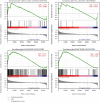
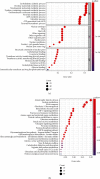
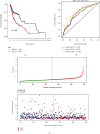

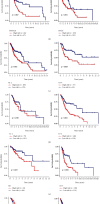
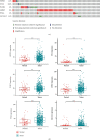

Similar articles
-
Seven Immune-Related Genes' Prognostic Value and Correlation with Treatment Outcome in Head and Neck Squamous Cell Carcinoma.Mediators Inflamm. 2023 Apr 20;2023:8533476. doi: 10.1155/2023/8533476. eCollection 2023. Mediators Inflamm. 2023. PMID: 39282247 Free PMC article.
-
Prognostic Correlation of an Autophagy-Related Gene Signature in Patients with Head and Neck Squamous Cell Carcinoma.Comput Math Methods Med. 2020 Dec 28;2020:7397132. doi: 10.1155/2020/7397132. eCollection 2020. Comput Math Methods Med. 2020. PMID: 33456497 Free PMC article.
-
Identification of prognostic marker genes in head and neck squamous cell carcinoma: A study based on The Cancer Genome Atlas database and experimental validation.J Oral Pathol Med. 2021 Oct;50(9):891-901. doi: 10.1111/jop.13186. Epub 2021 May 19. J Oral Pathol Med. 2021. PMID: 33880801
-
Comprehensive review regarding the association of E2Fs with the prognosis and immune infiltrates in human head and neck squamous cell carcinoma.Asian J Surg. 2024 May;47(5):2106-2121. doi: 10.1016/j.asjsur.2024.01.130. Epub 2024 Feb 5. Asian J Surg. 2024. PMID: 38320907 Review.
-
Circulating Tumour Cell Expression of Immune Markers as Prognostic and Therapeutic Biomarkers in Head and Neck Squamous Cell Carcinoma: A Systematic Review and Meta-Analysis.Int J Mol Sci. 2020 Nov 3;21(21):8229. doi: 10.3390/ijms21218229. Int J Mol Sci. 2020. PMID: 33153130 Free PMC article.
Cited by
-
A novel signature derived from metabolism-related genes GPT and SMS to predict prognosis of laryngeal squamous cell carcinoma.Cancer Cell Int. 2022 Jul 8;22(1):226. doi: 10.1186/s12935-022-02647-2. Cancer Cell Int. 2022. PMID: 35804447 Free PMC article.
-
Comprehensive Analysis of mTORC1 Signaling Pathway-Related Genes in the Prognosis of HNSCC and the Response to Chemotherapy and Immunotherapy.Front Mol Biosci. 2022 Apr 29;9:792482. doi: 10.3389/fmolb.2022.792482. eCollection 2022. Front Mol Biosci. 2022. PMID: 35573741 Free PMC article.
-
Inflammation-Related Gene Signature for Predicting the Prognosis of Head and Neck Squamous Cell Carcinoma.Int J Gen Med. 2022 May 9;15:4793-4805. doi: 10.2147/IJGM.S354349. eCollection 2022. Int J Gen Med. 2022. PMID: 35592543 Free PMC article.
-
Identification and Analysis of Senescence-Related Genes in Head and Neck Squamous Cell Carcinoma by a Comprehensive Bioinformatics Approach.Mediators Inflamm. 2022 Oct 17;2022:4007469. doi: 10.1155/2022/4007469. eCollection 2022. Mediators Inflamm. 2022. PMID: 36299414 Free PMC article.
-
Glycolysis related gene expression signature in predicting prognosis of laryngeal squamous cell carcinoma.Bioengineered. 2021 Dec;12(1):8738-8752. doi: 10.1080/21655979.2021.1980177. Bioengineered. 2021. PMID: 34565301 Free PMC article.
References
MeSH terms
Substances
LinkOut - more resources
Full Text Sources
Other Literature Sources
Medical
Miscellaneous

